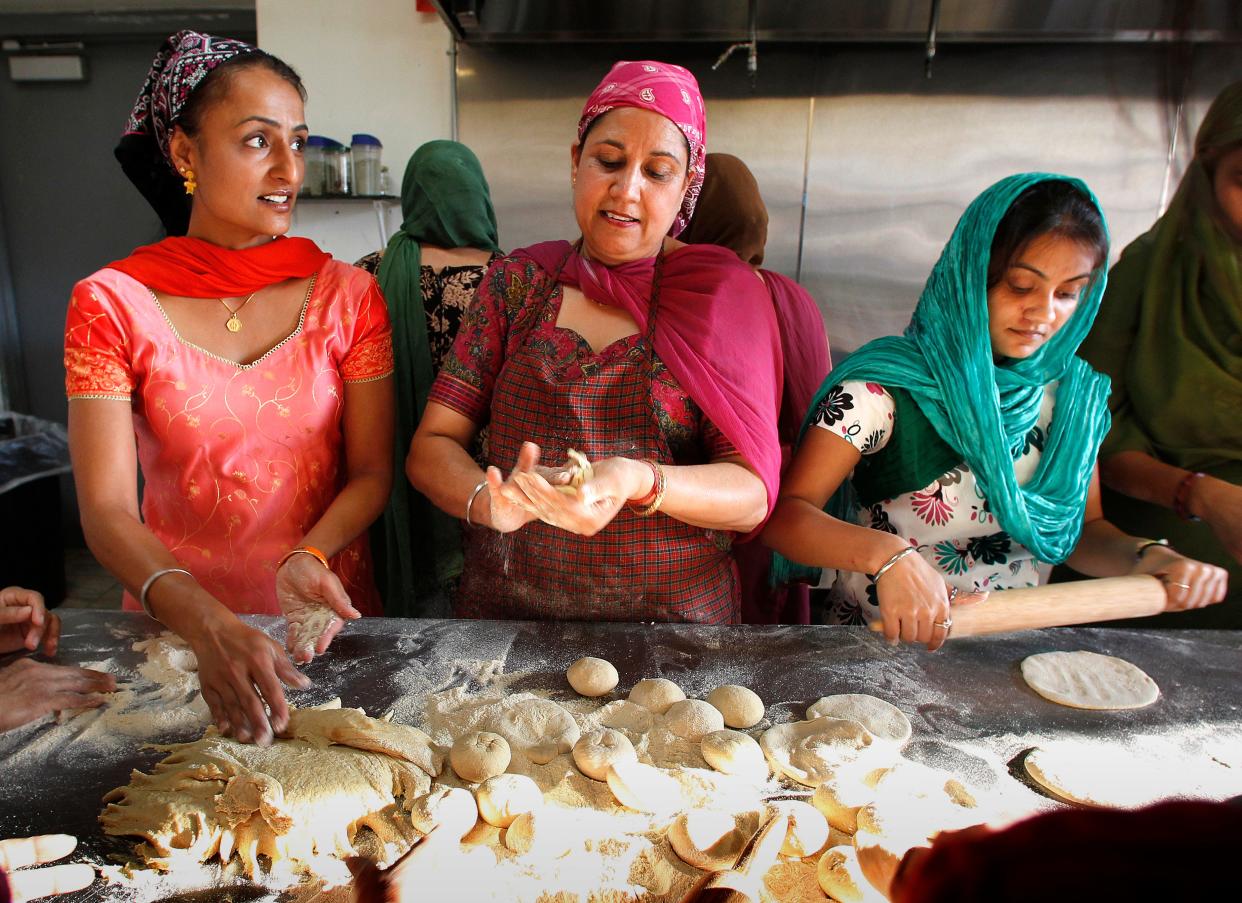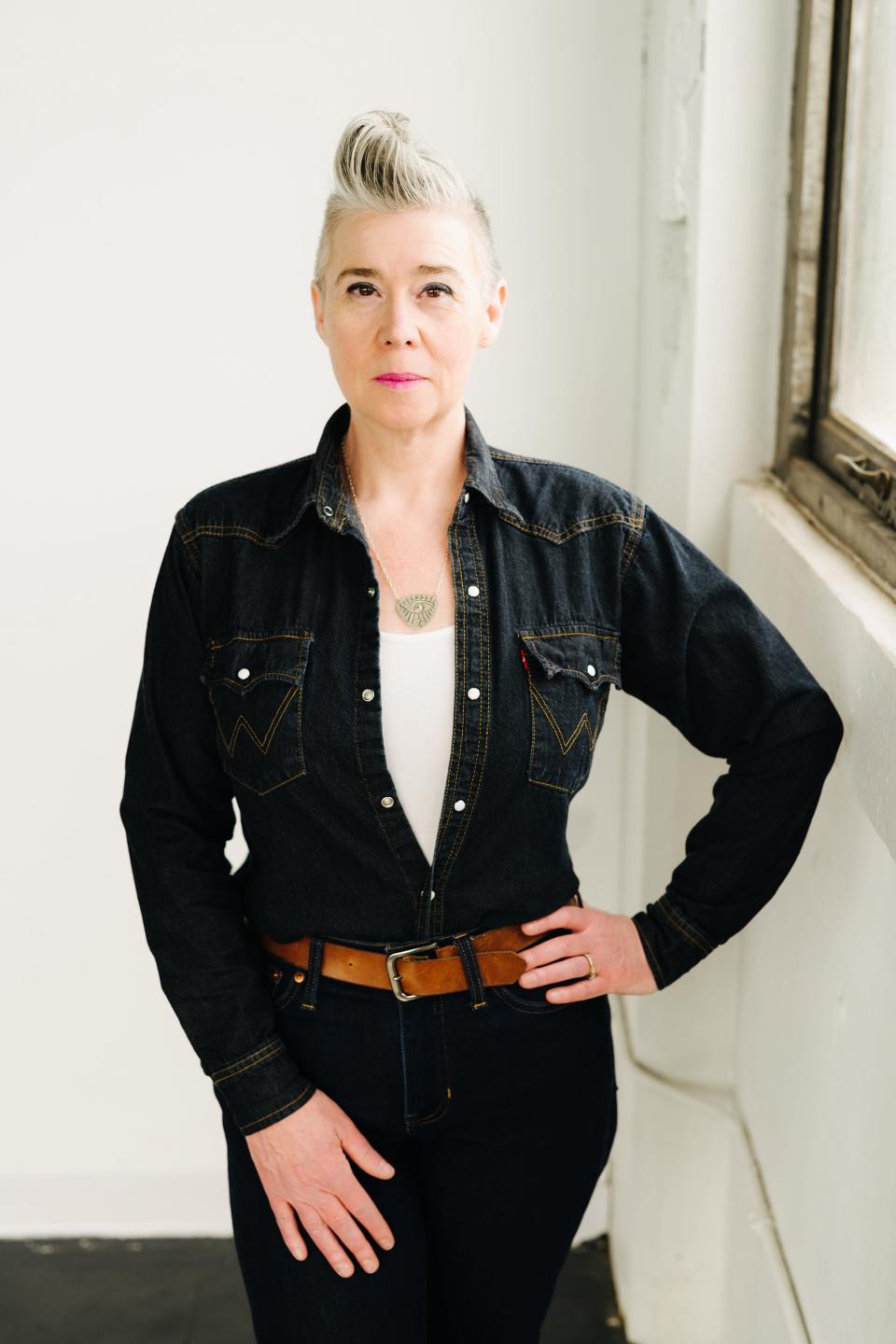Milwaukee writer's 'Holy Food' explains how religion influences what Americans eat

- Oops!Something went wrong.Please try again later.
Do you start the morning with a breakfast cereal? The beliefs of Seventh-day Adventists played a large role in developing that habit.
Love sushi? A company spawned by the Unification Church may have played a role in getting that raw fish in front of you.
Remember the story of Johnny Appleseed (aka John Chapman), roaming the country starting apple orchards? He was motivated by the message of Swedish mystic Emanuel Swedenborg. (And oh, by the way, he was planting apples for cider rather than for eating.)
In her new book "Holy Food: How Cults, Communes, and Religious Movements Influenced What We Eat" (Process Media), Milwaukee's Christina Ward describes many points of intersection between religion and American eating behavior.
"My goal with 'Holy Food' is twofold: to tell the uniquely American story of how New Religious Movements and utopian ideas influenced our food culture and to bring forward recipes that are historically resonant and affiliated with a specific group," Ward writes.

With more than 75 recipes including the Oneida Community's famous Strawberry Shortcake (designed to be served like griddle cakes, straight from oven to table) and Amana Colony's Schinken Salat (Ham Salad), "Holy Food" easily fulfills that second mission. In between those recipes, this is not a blurby book. Ward digs deep into the religious, cultural and intellectual histories of the groups she profiles, from the Shakers to Jim Jones and Peoples Temple.
Speaking of Jones, here's a footnote from "Holy Food" emblematic of Ward's commitment to details: "At the risk of pedantry, the mass poisoning at Jonestown was delivered via Flavor Aid, not Kool-Aid."
Many religious groups promoted vegetarian eating
You may wonder what led an atheist to research and write a book about the role of religion in American eating. "Holy Food" allows Ward to combine her two professional passions. As vice president and editor of independent publisher Feral House, Ward shepherds to publication books about intense, often marginalized subcultures, such as the metal underground, tramps and street culture. But she's also a food writer-historian and an official Wisconsin Master Food Preserver.
A reader of "Holy Food" will notice early on that many recipes here are vegetarian, even vegan. "Religious groups have found words in holy books and experienced divine revelations leading them to vegetarianism," she writes in partial explanation. But also, she points out practically, meat can be expensive so "a commune that struggled for cash ate a lot of cheap beans."
In one of many examples Ward provides of how beliefs influenced foodways, Ward describes how the Mormon mandate to keep at least a year's supply of food on hand led to members of the LDS Relief Society becoming skilled food preservationists, favoring recipes that utilize home-canned vegetables and meats.

People my age learned in grade school about George Washington Carver's work coaxing many products out of peanuts (just one aspect of his agronomical brilliance). Ward explores the religious motive behind Carver's diligence. He told Sunday School students that God spoke to him about plants, and saw himself on a mission from God to teach Black farmers self-sufficiency. Oh, he was a vegetarian, too.
Many American religious authorities promulgated strong ideas about the correct way to eat, including Elijah Muhammad, leader of the Nation of Islam from 1934 to 1975. Controversially, Ward points out, the Nation of Islam diet associated traditional Black Southern foods with white oppression. Muhammad thought foods filled with fats, sugars and salt were used to control Black people, keeping them unhealthy. He was down on fried food, in favor of vegetarian eating and fasting. The Nation of Islam also became a major importer and distributor of whitefish.
'The Settlement Cookbook' begin in Milwaukee
One of the great religious-sponsored cookbook stories is Lizzie Black Kander's "The Settlement Cookbook," first published in 1901. Kander led cooking classes for immigrant women at Milwaukee's Abraham Lincoln House, founded by prosperous German Jewish women to teach urban housekeepering skills to newcomers, who often came from rural areas. Kander's popular book, which has never been out of print, found a wide audience that included many gentiles. "American cuisine came to be defined by 'The Settlement Cookbook' (and others like it) as it casually introduced millions of goyim to Jewish dishes like Chocolate Matzohs, Kugel, and Mushkazunge," Ward writes.
In another local, and sobering, note, Ward describes how Sikhs make and serve a free vegetarian meal on Sunday afternoons in their temples for anyone to eat. That's what Sikhs in Oak Creek were doing on Aug. 5, 2012, when a white supremacist killed seven people there, assuming he was killing Muslims at a mosque.
A sweet cake and a nutty 'burger'
I asked Ward about her favorite recipes in the book. She replied by email.
"I have a sweet tooth and am partial to those," she wrote. "The Mother Ann Cake from the Shakers is a delightful light and floral cake. In my mind, it's perfect for summer because of its light sponge and delicate and subtle rose flavor. Rosewater as a flavor has gone out of style for Western cooks — though still prevalent in eastern Mediterranean and Arab peninsula sweets. I think it's overdue for a comeback."
Ward also expressed her love for House of David's Walnut Loaf. "It's nutty and oniony and reminds me of the 'burgers' served at the Trempealeau Hotel (and found in the frozen aisle at Outpost)," she wrote. "There was a different perspective about being vegetarian in the early 1900s versus today. People then were concerned about getting nutrition but developed recipes for flavor, whereas today, many vegetarian products and dishes are about replicating a 'meat experience.' I like the vegetable- and bean-based dishes that taste like themselves!"
The recipes in "Holy Food" were tested by friends of Ward with varying skill levels. She updated them for contemporary cooking techniques. "Pre-1950s recipes were more of a guide to ingredients and notes on specific techniques than the step-by-step instructions of modern recipes," she writes.
A theme that keeps coming up in "Holy Food" is how syncretic life in America is, both in food and religion, combining ingredients and ideas from varying sources.
Are religious groups still influencing what we eat today? Ward believes the answer is yes. "The framework — First Amendment and tax laws — that successfully allowed for groups to open restaurants and food pantries and to start food businesses throughout the history of the United States still works today," she writes.
If you go
Christina Ward will talk about "Holy Food" at 6:30 p.m. Sept. 29 at Boswell Books, 2559 N. Downer Ave. Register for this free event at christinawardmke.eventbrite.com.
This article originally appeared on Milwaukee Journal Sentinel: Christina Ward's 'Holy Food' explores faith-based eating in America

